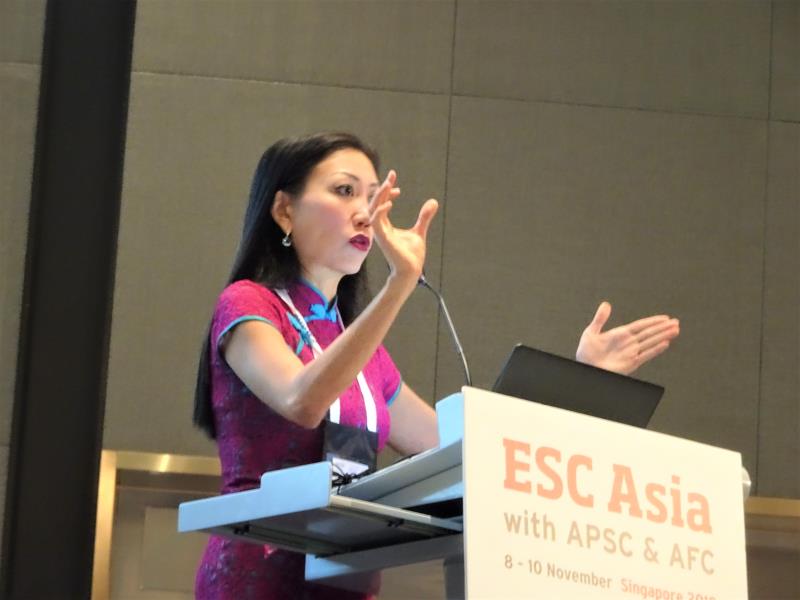 Prof Carolyn Lam
Prof Carolyn LamThe prognosis and the optimal doses of guideline-directed medical therapy (GDMT) for heart failure (HF) appear to be different between men and women, according to leading cardiologist Professor Carolyn Lam from the Duke-National University of Singapore.
“Women [with HFrEF*] appear to have better protection at lower doses compared with men who continue to have reduction [in the risk of the primary composite outcome**] until they reach the target dose,” she said.
While the lowest risk of the primary composite outcome for women was achieved at 50 percent of the recommended dose of GDMT, this occurred at 100 percent of the recommended dose in men. Furthermore, as the maximum risk reduction was already achieved at 50 percent of the target dose in women, there was no additional benefit from up-titrating GDMT beyond this point, in contrast to men. [Lancet 2019;39:1254-1263]
Similar findings were observed in an independent cohort of 4,500 Asian patients with HFrEF enrolled prospectively in the Asian-HF registry.
This brings into question the true optimal dose of GDMT for women and suggests that “there may be a different recommended target dose for women vs men,” said Lam.
Also, more Asian women than men with HFrEF had diabetes despite a lean body mass index, and the presence of diabetes was associated with worse outcomes for all-cause mortality and hospitalization for HF in women vs men (hazard ratios [HRs], 1.79 vs 1.32; p-interaction=0.005).
In addition, a normal ejection fraction (EF) in man and woman does not mean the same thing, especially in the elderly population, according to Lam. EF is higher in women than men across all ages. [JACC Heart Fail 2014;2:541-543]
“[However], there is more evidence of systolic dysfunction despite a higher EF in women vs men,” Lam pointed out, raising the question of whether a different EF cut-off is needed for defining HFrEF and HFpEF*** in women vs men. [Eur J Heart Fail 2014;16:535-542]
Taken together, these data call for sex-specific approaches to managing patients with HF, she highlighted.
The middle child of HF
While HFrEF is defined as EF <40 percent and HFpEF as >50 percent, those with EF falling in the range of 40–50 percent were unclassified until Lam introduced them as “the middle child of HF”, together with Dr Scott Solomon from Brigham Women's Hospital in Boston, Massachusetts, US, in an editorial in 2014. [Eur J Heart Fail 2014;16:1049-1055]
“[This group was called] the middle child because it is often forgotten, in contrast to the youngest child HFpEF which is getting all the attention and the eldest child HFrEF which got all the success in previous trials,” said Lam.
The forgotten middle child of HF gained even more prominence in 2016 when it was given a name — HF with mid-range EF (HFmrEF) — in the 2016 ESC guidelines for HF.
“Let me clarify that the ESC 2016 guidelines did not suddenly create a new entity, the 40–50 percent EF range was simply called the grey zone in the prior guidelines,” stated Lam.
Having recognized as an entity, the greater research into HFmrEF henceforth suggests that it resembles more closely to HFrEF than HFpEF with respect to ischaemic aetiology, which presents more commonly in HFmrEF and HFrEF vs HFpEF. [Eur J Heart Fail 2018;20:1230-1239]
“Perhaps more importantly, retrospective analyses from randomized trials suggest that patients with HFmrEF seem to benefit from therapies shown to improve outcome in HFrEF,” highlighted Lam.
“[Then] why not just call them all rEF? Well, that's because we have to recognize that the strength of evidence in this group of patients really cannot be compared to the strength of evidence in the HFrEF group with EF <40 percent. So, the grade of recommendation may need to be tempered and considered on a case by case basis,” she explained.